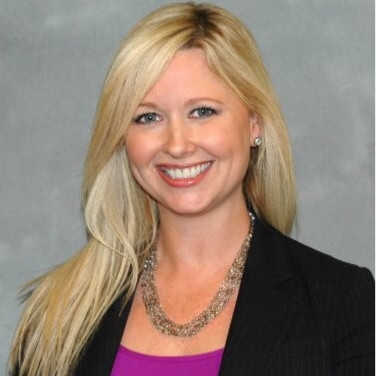
Episode 113
Becoming a Treasurer:
Part 13 – Learning from Literature:
Setting your Destination. Lewis Carroll
On this episode of the Becoming a Treasurer series, Craig Jeffery continues the Learning from Literature sub-series showcasing Lewis Carroll’s Alice’s Adventure in Wonderland. This illustration covers leadership principles and tactics on how to properly set your destination by taking purposeful action in the short and long view. Listen in to learn how to successfully set and reach your destination.
Host:
Meredith Zonsius, Strategic Treasurer


Speaker:
Craig Jeffery, Strategic Treasurer


Episode Transcription - Episode 113 - Becoming a Treasurer Part-13
INTRO:
On this episode of the Becoming A Treasurer Series, host Craig Jeffery continues the Learning from Literature sub series showcasing Lewis Carroll’s Alice’s Adventures in Wonderland. This illustration covers leadership principles and tactics on how to properly set your destination by taking purposeful action in the short and long view. Listen in to learn how to successfully reach your destination and fulfill your mission and vision. Welcome to the podcast, Craig.
Craig Jeffery:
Thanks, Meredith.
Meredith:
So this is our third Learning from Literature episode and 13th in Becoming A Treasurer Series. The title is Setting Your Destination, which seems foundational and perhaps obvious. What quote do you have for us? And does it include banging your head?
Craig Jeffery:
It does not include banging your head. The first one we did was about risk, and we used the Robert Frost poem, The going from room to room in the dark. Then we used A. A. Milne’s Winnie the Pooh about bumping down the stairs. And this one is from a book that was published more than 150 years ago, Alice’s Adventures in Wonderland, and this is by Lewis Carroll. And we’re not even going to do a quote about falling down a hole, so your head is safe.
Meredith:
Well that’s good. Will you be quoting The Mad Hatter, Alice, or someone else?
Craig Jeffery:
The quote is from the which way I ought to go section and it’s Alice and the semi-transparent Cheshire Cat.
Meredith:
What are the key elements of this quote?
Craig Jeffery:
Yeah, maybe I should quote it first.
Meredith:
Yeah, maybe you should quote it.
Craig Jeffery:
Everyone might not know it. This is foundational in Western literature to know this. So Alice comes to this fork in the road and there’s the Cheshire Cat. His smile appears and she then had a conversation with the cat. And so she says, “Would you tell me please, Cheshire Cat, which way I ought to go from here?” And the cat responds, “That depends a great deal on where you want to get to.” She says, “I don’t much care where,” and then the cat responds, “Then it doesn’t much matter which way you go,” and Alice continues her statement.
Craig Jeffery:
She says, “So long as I get somewhere,” and the cat responds to this discussion saying, “Oh, you’re sure to do that, if only you walk long enough.” So that’s the basics of this quote. She’s asking the cat for advice and the cat needs a little more information and she goes from there. But you asked about what are the key elements of this quote, and I don’t want to stretch literature too much to make it so about treasury, but there’s a couple of things here. She’s traveling. She reaches a fork in the road, and there’s this choice.
Craig Jeffery:
She can go one way or the other. She can also stay still, and perhaps she could also return. So she’s got a choice to make. I think the other element of this quote is when you ask unclear questions, those that don’t have an end in mind, sometimes you get a different answer than you want. And if you have a good respondent, they’ll help you think through what you need to do. And finally, we’ve learned from this, there’s either a bias towards action or busyness or purposeful direction and thoughtfulness. Those things are really crucial here.
Craig Jeffery:
Alice is like, “Which way do I go?” And the cat’s like, “Well, it depends on a great deal on where you want to get to.” And she doesn’t care, and so she’s initially thinking… She has a bias towards action or busyness or just doing something, not necessarily having a purpose or a direction or being thoughtful about it. So whether it’s about purpose or the purpose of your purposes, this is relevant in our own lives, as well as leaders in treasury.
Meredith:
This sounds more like general leadership rather than treasury specific. Is that right, or is this some nuance here?
Craig Jeffery:
No, you’re right. It is about general leadership. It’s nothing treasury specific. Lewis Carroll, from all accounts, didn’t know anything about treasury, but knew about life and traveling. This general leadership trend, I think we can gain some insight from this when we think about mission and vision. Everyone talks about mission statement, vision statement. They laugh about it. You print it up on the card. Mission is what are you charged with doing. And vision, your vision statement is a set of your aspirational goals.
Craig Jeffery:
But those are not enough. Those are foundational, but they’re not enough. You have to have some sort of target and destination, and it is clear that we need to know where you’re heading, what are you trying to achieve, and what’s next. Part of this idea of having these aspirational goals means you need further… I’ll call it vision supporting statements or vision supporting destinations or way points to make this work.
Craig Jeffery:
And I think that’s important because if we understand the difference between action for the sake of action, which is busyness, and purposeful action, in other words, towards a destination, that will help guide our daily tasks, our weekly tasks, our monthly tasks, whether we build up from there or whether we go from the top level down. We have to be thinking about the end as we’re doing the various steps. And so if we think about what is the purpose of our actions, our activity, our technology, our training people, we have to think about that in a more long-term sense.
Craig Jeffery:
I don’t want to say ultimate sense, but in a much longer range sense. It’s important, and Alice needed to understand this, that activity doesn’t win or dominate purposeful action in the direction of your target. So I think those are a couple of the points from this.
Meredith:
Very good. You mentioned setting your destination and purposeful action in the direction of your target. Would you unpack that a bit?
Craig Jeffery:
Sure, and it’s not really fair for me to say short view and long view, but I will say that for purposes of this podcast as people are listening, I don’t want to get too involved in some differences there, but I’ll bias the long view over the short view for purposes of illustration. So the short view can be, what do I need to do today? What is urgent? What’s essential? What’s clamoring for my attention or for a response on a more immediate basis? That can be a bad way of looking at the short view. It’s all shortsighted and there’s no link to the long-term would be a way to put it.
Craig Jeffery:
But the long view or the long-term purpose, this idea of… How do I put it? This idea of setting your destination, having your vision and what your vision will look like and how you get there will make a difference. What do I need to do to help us get to our destination, to achieve the vision? I use the phrase, vision supporting statements. So this might be frameworks, framework documents about risk, for example. We’ve talked about that before. It could be, what do I need to do with the team that we have? Who needs to be on the team?
Craig Jeffery:
How do they need to develop individually? How do they need to support what we’re doing as a group? What do we need? And it can be about technology. It can be about risk management and other areas, but how do we define accomplishing our vision at the next level down, not at the detailed tasks for today, but what will that look like from a team perspective technology framework? And when we think about that, what will we do to achieve our vision while accomplishing our mission means we have a bias towards the long run.
Craig Jeffery:
If I have a choice between doing something that’s very short-term and something that helps us get in the long run, I’m going to have a bias towards doing that. And I’ll make a substantial effort to make that happen, while being mindful of the critically urgent or those things can get us in trouble. So you can’t ignore the short-term, but we have to be mindful of those things that are truly urgent and critical, or maybe I should say just are truly critical and urgent, not just those things that scream for attention. I’ll give you a couple examples, Meredith.
Craig Jeffery:
Team development and maybe technology. So for team development, something might be faster if I do it myself. I’ve got limited time. It needs to get done in a hurry. That’s short-term practical. Are we going to focus our time on training our most valuable resources? The people we have are far more valuable than any technology put in place. So just think about how do we train and coach others and moving along. Are we challenging them with purpose? Not just saying, “Oh, you’ve got a big weakness here. You need to spend a lot more time on that.”
Craig Jeffery:
That’s not necessarily what I mean there, but challenging them in areas that will grow and expand their ability and help them do more and help them help the team. There’s an aspect of helping them align to their strengths and grow in their strengths, but also developing in some key areas that might be a gap that will hold them back. So answer some of these questions, what is faster for today and what is better for the organization over time? Make sure that well over half the time you’re answering and acting in a way that’s what’s better for the organization over time, what’s better for my team over time for this particular person over time.
Craig Jeffery:
From a technology standpoint, this long-term view of technology, just think about the foundational elements of data, connectivity, systems, reporting, and analytics. As we think about that, what tech are we looking at considering? And this can be, are we using a system that’s closed or open? Are we looking at acquiring that? What are we doing with data? What do I need to do today about how will I need that in the future? And you and I have talked about data at different times, how rapidly it’s growing.
Craig Jeffery:
It grows 40 to 60% on a compound annual basis, compound annual growth. What are we going to do to harness the data to meet our charter, to fulfill our mission, and to achieve our vision? We have to think about all of those elements in terms of a long-term view. Otherwise, every decision we make is suboptimal. It’s a throwaway decision, and we’re going to rework it. We need to head towards our end point, not head laterally or go back, but move towards it as directly as we can. Not all the time can we do it directly, but we need to be thinking about that.
Craig Jeffery:
So the purposeful action is in the direction of the target. It means you have to have a target, you have to know how to get there, and you may need to ask advice preferably not from a cat.
Meredith:
How do you know you’re setting your destination properly?
Craig Jeffery:
This is getting into the soft skills a bit. Some of you who are on your way to becoming a treasurer may have stopped listening so far, but I’ll continue. And if you can stick with me past the use of the phrase vision casting, you’ll be my hero. So if you think about vision casting, that sounds really nebulous and squishy. It’s like creating a vision. What is an aspirational goal for your organization? What is a really challenge for the group? If you can do this, this would be quite surprising, quite leader-oriented, quite, quite different.
Craig Jeffery:
And so this idea of you’ve created a vision, where you want to be, what would describe that, but then there’s a lower part of that that we can get hung up on. And we talked about creating the vision and then this idea of vision supporting statements or vision supporting descriptions, whether it’s a framework for risk for what we’re going to do with technology, for how we’re going to lead and grow our teams, that has to be part of that framework. It can’t just be the vision at the end. There has to be some element of how you would know you had achieved it.
Craig Jeffery:
Otherwise, we run into this sub-optimized approach. What do I do in isolation? What’s my decision with this piece of technology, or how I divide this task up to team members? This person can do it faster. Well, maybe this other person needs to develop more fully there. That will round them out and help our team be more high functioning. So if we optimize every single decision, we’ve sub-optimized our overall progress towards our destination. We’ve had the wrong bias. Maybe it’s let’s work on our desktop procedures before we work on policy or even before we work on our frameworks.
Craig Jeffery:
It’s the checklist before the plan. I think that’s the wrong order. And just like Alice was asking the wrong question, she got a better answer than her question was. She asked it in the wrong order. This idea of your advisors, whether they’re peers, other coaches, consultants, your bankers, peers from other organizations, or any of those sources, it’s the idea that your advisors can help you qualify the context of what you’re asking. So their advice is relevant, as opposed to, what do I do here? What are you trying to accomplish?
Craig Jeffery:
Where are you? Where are you in relationship to the end? Or what are others doing here? That may be a starting point, but that may not be the right question to ask in your situation. So your advisors should help you think through both your destination, the pathway to get there, as well as some of the way points and markers on the way to your destination.
Meredith:
Right. It’s always good to have more than one advisor. Craig, did you get all of this from that quote?
Craig Jeffery:
Carroll’s book is fun for many kids. It’s an interesting story. And for adults, it’s also interesting. And sometimes as you read more of the background, it might be a little disconcerting for some adults, but he has a really interesting way of looking at things. He looks at them in a different way than many people do. And sometimes just the interesting or odd way he describes them as part of a story, it certainly makes me pause. It’s made me pause on a number of sections and think about what he is saying. What does it mean the way he’s saying it?
Craig Jeffery:
What is he trying to get across? I’ve certainly thought about the implications of some of the different conversations that have happened in the book, and that’s where I found value in the book beyond the surface story.
Meredith:
I know a lot of people love Alice in Wonderland. It’s a family favorite. I know for us. What are your final thoughts?
Craig Jeffery:
I would say be specific when you ask for help and have an end in mind or have the end in mind. And if you don‘t have the end in mind, ask for help in figuring out how to I’ll say create the vision and the vision supporting statements and some of the framework that will get you there. That would be one. I think the other is a little more lighthearted. It would be take wisdom from where you can get it and accept the challenge or even a rebuke. In this case, the cat has a great way of answering.
Craig Jeffery:
The Cheshire Cat has a great way of answering Alice with the, “Well, you’re sure to do that. As long as you’re moving, you’re going to get somewhere.” In a sense, Carroll was using the cat to help people think about the purpose of your purpose as the purpose of your action and being mindful, thoughtful in approaching what you do.
Meredith:
That’s great advice. Thanks, Craig. I’m looking forward to continuing this Learning from Literature series or sub series. It’s a fun way learn with great and useful insights.
Outro:
You’ve reached the end of another episode of the Treasury Update Podcast. Be sure to follow Strategic Treasurer on LinkedIn. Just search for Strategic Treasurer.
Related Resources
#TreasuryFAQ – YouTube Playlist
Check out our YouTube playlist covering many frequently asked questions in treasury!
Becoming a Treasurer – A Treasury Update Podcast Series
This series within The Treasury Update Podcast explores questions around being a successful treasurer. Topics discussed include preparation, what needs to be measured, effective communication, development of a team, and acquirement of resources needed.



